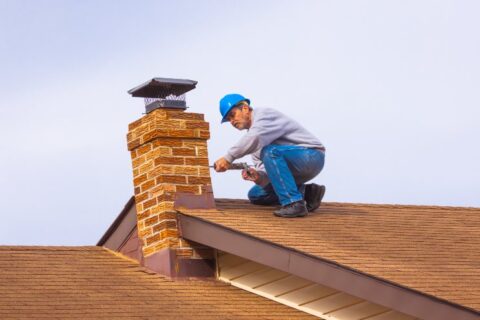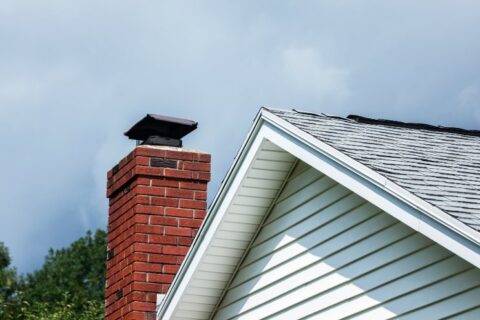You Had Your Furnace Checked – Don’t Forget Your Chimney!
Before cold weather arrives, homeowners often have their furnaces inspected to ensure they can work safely throughout the winter. However, many fail to realize their chimneys need to be inspected, too! In the winter, damaged or malfunctioning heating appliances can leak dangerous carbon monoxide gas. Having your chimney inspected at the beginning of the burning season can give you the peace of mind to enjoy roaring fires all winter long.
What is carbon monoxide?
Odorless, colorless, and tasteless, carbon monoxide is a deadly gas that has been nicknamed the “silent killer.” This is because it is so difficult to detect without specialized equipment. Carbon monoxide is a byproduct of combustion reactions. It is created by cars, fireplaces, furnaces, grills, generators, and any other appliance that burns fuel. When properly maintained and safely vented, these appliances pose little to no risk to homeowners. However, it is only when damaged, deteriorating, or otherwise malfunctioning that they can leak carbon monoxide gas. Because of this, it is important to have heating appliances – including fireplaces – inspected each year to check for signs of carbon monoxide leaks.
The dangers of carbon monoxide poisoning.
Carbon monoxide poisoning is responsible for more than 400 deaths each winter in the United States. Because carbon monoxide gas is so difficult to attack, many homeowners do not recognize the symptoms of carbon monoxide poisoning. At low levels of exposure, carbon monoxide poisoning mimics the symptoms of the flu, causing nausea, headache, and drowsiness.
At higher exposure, symptoms will continue to worsen and can include impaired vision, cognitive functioning, and reduced brain function. The overwhelming drowsiness often causes victims to fall asleep, leading to coma and even death. If carbon monoxide poisoning is suspected, homeowners should immediately open doors and windows. Afterwards, move to a fresh air location before calling emergency services. The air quality of the home should be tested before re-entering the home.
Preventing carbon monoxide.
There are a number of common sense ways homeowners can reduce their risk of exposure to carbon monoxide gas. First, heating appliances such as furnaces and chimneys should be inspected each year. This is to ensure that vents and ducts are open, unblocked, and in good condition. Carbon monoxide detectors should be installed on each level of your home, especially near fireplaces, furnaces, and outside sleeping areas. Low-level carbon monoxide monitors are particularly effective in detecting the dangerous gas before it reaches harmful levels.
Keep carbon monoxide from getting into your home. Use grills and generators outdoors, and away from doors and windows that could allow the gas to creep in. Likewise, never leave cars idling in the garage, even if the door is open. Instead, pull them into the driveway to prevent carbon monoxide buildup in an enclosed space. Ovens and stoves should never be used to heat a room. In addition, unvented space heaters should only be used for short periods of time.
You had your furnace checked – don’t forget about your fireplace and chimney! Call ChimneyTEK today and schedule your chimney inspection to keep your family safe this winter.



